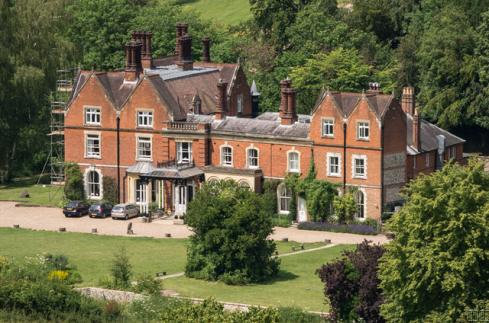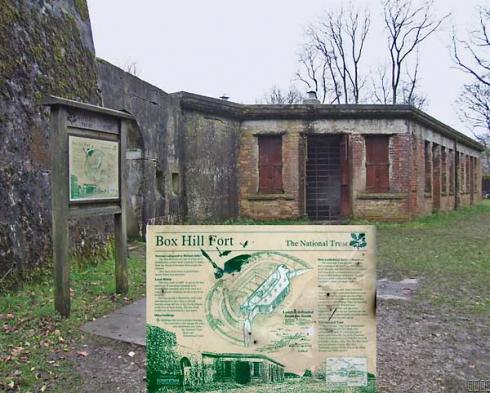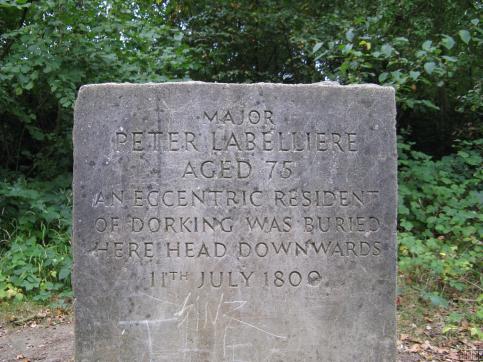Juniper Hall

Juniper - the berries of which provide an essential ingredient for gin and are increasingly used as a flavouring, especially with game - is now rare on Box Hill, most of the bushes being scattered on the escarpment. But it certainly used to grow prolifically, as the local place-names of Juniper Top, Juniper Bottom, Juniper Hill and The Junipers all testify. Perhaps the best-known of these - and certainly the one with the most colourful history - is Juniper Hall, a substantial eighteenth-century red- brick house just outside the village of Mickleham at the foot of Box Hill.
Originally the Royal Oak coaching inn, Juniper Hall was enlarged and remodelled by Sir Cecil Bishopp in the 1750s, with a classical portico, tall arched windows and delicate plasterwork inside. Its chief glory was the so-called sculptured drawing-room, decorated by a gifted amateur artist in the style of Robert Adam.
The Fort or Military Road

The Fort Road or Military Road is the name now given to the broad grass-covered track leading up the long spur of Box Hill from the Mickleham road, though it was in existence as a track long before the erection of the fort - believed to be one of the earliest examples of reinforced concrete - in the last decade of the nineteenth century. General Sir Edward Hamley, a leading writer on military strategy who conducted a vigorous campaign for the adoption of measures to prevent invasion from the Continent. Unlike most of the other leading soldiers of the day, Hamley was an enthusiastic supporter of the volunteer forces, and he considered that they could play an import- ant part in the defence of the capital in the event of an invasion. He outlined a scheme for the establishment of a line of lightly fortified assembly points around London. At Box Hill 2.4 hectares (6 acres) were bought in 1891 for £2,221 and the fort, which cost £4,714 to build, was completed by 1900. In accordance with the tactical thinking of the time, the Box Hill fort was not designed for artillery. Rather, it consisted of concrete ramparts whichprotected nearby trenches from which the infantry would fight.
Major Peter Labelliere

About 100 metres to the west of the Old Fort, a standing stone commemorates the eccentric life of Major Peter Labelliere, an officer of Marines, who for many years was a resident of Dorking. An early 19th-century book called Promenade round Dorking relates that 'in early life he fell in love with a lady, who, although he was remarkably handsome in person, eventually rejected his addresses - a circumstance which could not fail to inflict a deep wound on his delicate mind'. Having accurately prophesied the date of his death in 1800, Major Labelliere left two express wishes in his will: that the youngest son and daughter of his landlady should dance on his coffin, and that he should be buried upside down on Box Hill. 'As the world is turned topsy-turvy,' he reasoned (quite correctly, it might be argued), he would be the right way up in the end!



